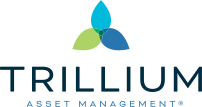Market Watch
Much of the historical criticism of socially responsible investing (SRI) rests on the supposed conflict between social justice and environmental sustainability on the one hand, and profit seeking for shareholders on the other. If corporate boards and CEOs must, as a matter of law and regulation, pursue policies that maximize shareholder value, then isn’t corporate social responsibility simply, in the words of The Economist magazine, “philanthropy at other people’s expense?”
Well, no. Over 100 million Americans, representing more than four out of five workers, are employed in the private sector. They represent a large portion of the citizens of this country. Thus private-sector workers, from the CEO on down, have both a self-interest and a moral responsibility to pursue business activities consistent with the common good. As discussed by Marjorie Kelly in her book by the same name, there is no “divine right of capital” to blindly pursue short-term profits for the exclusive benefit of shareholders. To the extent our laws and customs dictate a self-destructive and narrow focus on the short-term bottom line, the status quo can and should be changed.
This, to say the least, is not a mainstream view among our investment brethren on Wall Street, where “green” continues to refer to the color of money. Why then, have some of the biggest brokerage houses set up dedicated investment research teams focused on environmental and social issues?
The answer is that a growing number of large-scale investors are defining environmental, social and governance (ESG) concerns as risks and opportunities that can and should impact investment decisions. Once recast this way, ESG factors can then be categorized, estimated and priced. Mainstream finance has a consistent framework for security pricing: project the cash returns from the investment into the future, and then assign a risk level reflecting the uncertainty of the payment schedule. A government bond is considered low risk, because it always pays on time. In contrast, a promising Internet startup company should be seen as higher risk despite the potential upside, as there is some chance it will fail altogether.
The standard asset pricing model is thus a framework for both estimating opportunity (greater future cash payments) and for assessing risk (the uncertainty of future payments). Wall Street is now using this framework to help price risk and opportunity in a variety of new areas. For example, Goldman Sachs has identified the following ways in which global climate change influences returns for market sectors and individual companies: 1) regulation, litigation and impact on business operations (risk impacts) and 2) corporate reputation, competitive position and new product development (risks and opportunities).
Martin Luther King said that almost always the group making the world better is the creative dedicated minority. When the impact of global warming on investment decisions becomes the topic of serious study by Goldman Sachs, the Union Bank of Switzerland and Citigroup, what was once the dream of a dedicated few at Trillium Asset Management and elsewhere is becoming mainstream







